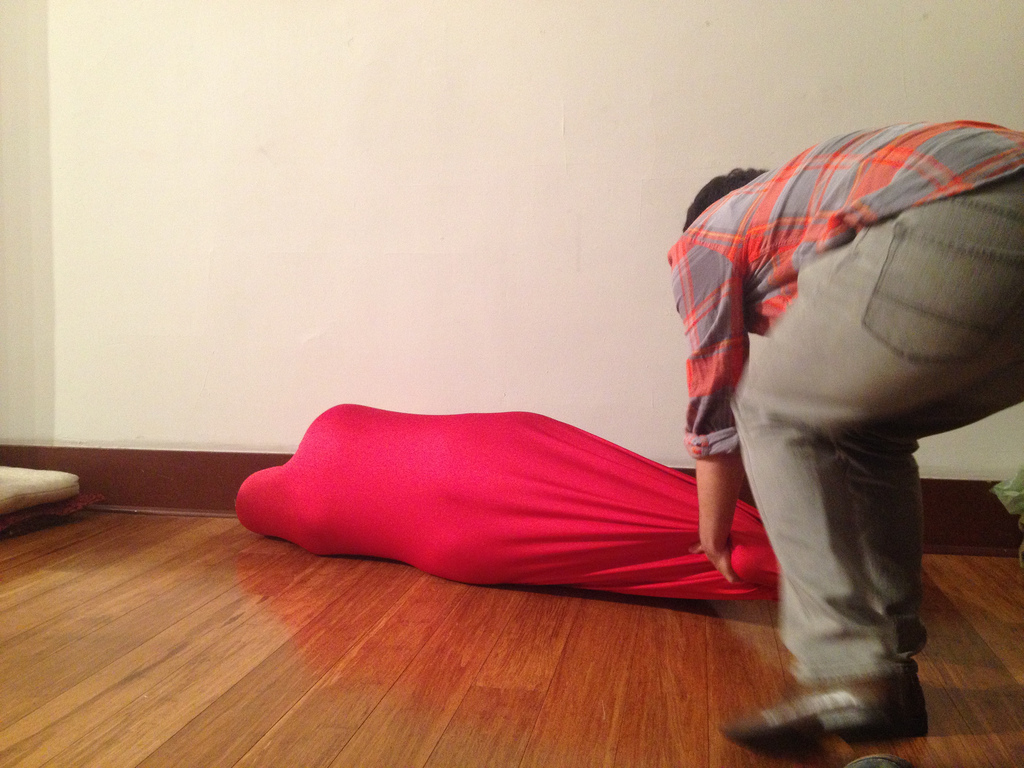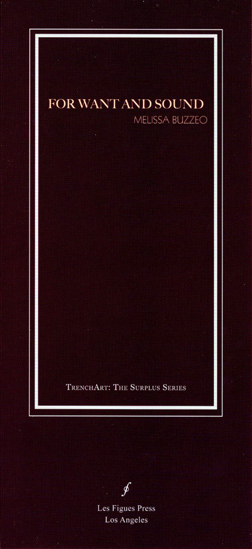
Melissa Buzzeo. For Want and Sound. Les Figues Press.
WINTER, a healing tea made from blue cohosh bark, red raspberry leaf, angelica root, nettle leaf and oatstraw. (For its charnel ground state: vis-a-vis Long Island: a historiography of the body and the politics of healing: there. A companion text might be Buzzeo’s “memoir-through-the-body” evolved through two intensely somatic, elegant and frightening talks I had the good fortune of hearing her give: at the Poetics of Healing symposium curated by Eleni Stecopolous and The Queer Heart panel at &Now curated by Matias Viegener. Buzzeo’s own pioneering work as part of the Architecture program at Pratt – questions of renovation in particular – and her own immersion in performance art/film theory – make this year’s book a vital contributant to contemporary practices at the intersection of narrative, documentary and poetic forms.)
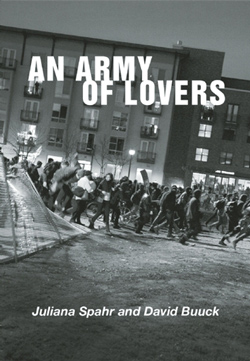
Juliana Spahr and David Buuck. An Army of Lovers. City Lights Books.
SPRING, Glenlivet up. (For its Marxist cafe atmosphere circa 2009 – 2012: a set of parallel dejections worked out through the street and the milk. A book written by two people who are “continuing to walk.” Who could not love Demented Panda and Koki? Both these writers were generous and chilled out hosts of the East Bay Poetry Summit, an event marked, as Spahr said, by “sociality” – something that prompted a second event: Poetry and Revolution. I am fascinated by their attention to inequality, to questions of violence and community: something borne out by the collaboration itself. From the end notes: “As we wrote this, we read a lot and we talked about our reading a lot and in parts of this book this reading and discussion shows up but it isn’t always clearly marked.”)
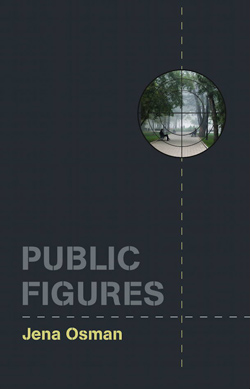
Jena Osman. Public Figures. Wesleyan University Press.
SUMMER, water. (I am thinking of a talk that Osman gave, also at &Now, as part of a panel called “Innovative aesthetic responses to the so-called global war on terror.” Osman is a poet interested in “connecting etymology and history,” as she said in an interview with H. L. Hix for The Conversant (on/for an earlier book, The Network, another favorite). How can a poet do the political work of analyzing a fleeting mark or sign or outline for what it might tell us about the time we both are and are not living in? As Osman says in the interview: “[I]f I could follow the history of the words I’m looking at, maybe I could understand the history of the times.” Her tender and thoughtful talk – working through surveillance technologies and their paratextual art forms – asked the question: “What brings us closer to the body on the ground?” I carried that question through the rest of the Fall. I am the kind of person who feels eviscerated, a little bit, by conference culture and yet in retrospect I was enormously grateful to have sat next to this writer – within the endocrine reach of her question and, by extension, herself.)
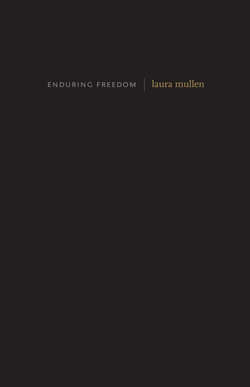
Laura Mullen. Enduring Freedom. Otis Books / Seismicity Editions.
FALL, pink champagne and/or excellent coffee. (In a short, notebook reflection on her website, Mullen writes: “‘With,’ the opening poem of my recent book (Enduring Freedom), haunted me—in pieces: notes, drafts, scrawled repetitions—longer than I knew.” I think of watching Mullen throw a wedding dress into a swimming pool an hour or so before she gave a reading at The Jack Kerouac School of Disembodied Poetics in Boulder, Colorado. I watched her dive in after it; there is an accompanying film of watching the dress drift, balloon, render itself useless or unfit. A wet ghost. This writer’s work is accompanied, in other words, by intellectual and visceral statements that take place in other realms. The book as performance score. I am thinking also of her panel talk at &Now for “Space, Place and Reciprocity”: Mullen’s tracking or trace of boundary content, the question of what happens to a body when it emits a content not intended to appear beyond it. An analogy or expense that Mullen brings, in other venues, to the Iraq war, to the epidemiology of polluted sites in her “own” Louisiana, among other: tracts.)
